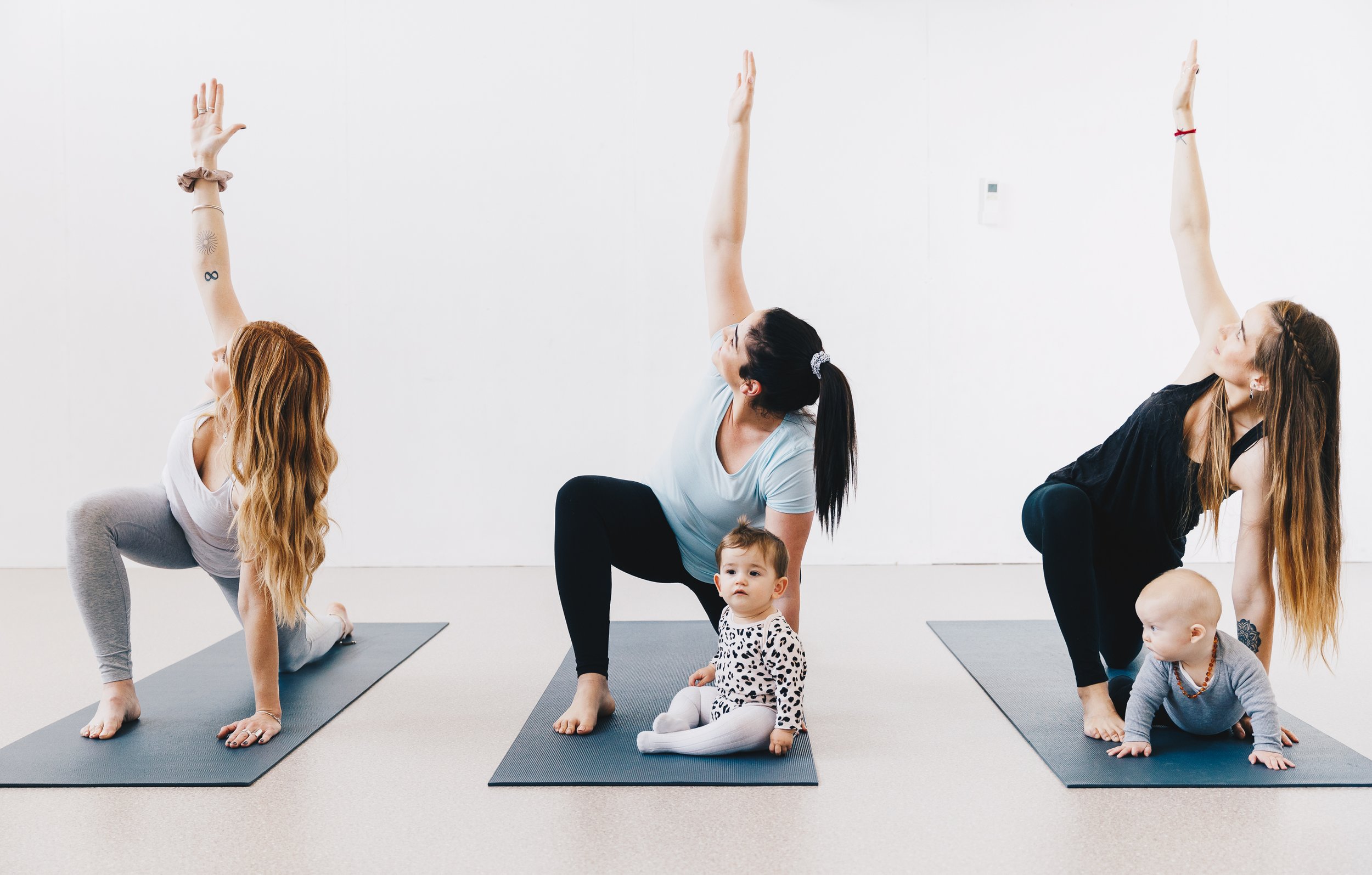MOVEMENT FOR PARENTS
MOVEMENTS & MOMENTS
The Benefits of Movement for
Parental Mental & Physical Wellbeing
I always loved movement, from a young age I danced and this became a serious element of my life from age 3 onwards. Yoga was introduced to me around age 7 and these two movement modalities have stayed with me throughout my journey through university, into the workforce and also as a parent. Along the way I’ve added other movement I love ~ such as pilates and swimming ~ and tried many other types of fitness, some sticking for awhile, or becoming a permanent fixture in my lifestyle, and others not so much…
Why is being active is important? We know studies have shown the health benefits of movement and fitness ~ body management, reduced illness, improved cardiovascular health, improved bone density as we age. It may also be a surprise that exercising a little every day (or regularly every week), has been shown to increase life expectancy.
I believe there are two factors that are key to long term success:
Choosing an activity (or set of activities) that you deeply enjoy.
Setting small and regular schedules.
How is this achievable - and why is it vital for parents of young children?
Theres lots of evidence that being active is excellent for preconception care as well as for pregnancy, birth and recovery. Postpartumn recovery is so important for the mental wellbeing of mothers, whether its a first baby or subsequent. The postpartumn time is not merely the first 6 weeks of having a baby. Studies have shown that it takes seven (7) years to rebuild and recover from childbirth. And parents who don’t physically give birth ~ fathers, non-binary parents, partners, foster or adopted parents still feel the physical and mental load and overwhelm that accompanies caring and raising children.
Being active is crucial for the mental and physical health of parents for several reasons:
Stress Reduction
Mood Enhancement
Increased Energy Levels
Better Sleep Cycles
Cognitive Function
Role Modelling
Social Interaction & Community
Regular physical activity helps reduce stress levels by increasing the production of endorphins; exercise often acts as a stress reliever. Engaging in movement releases neurotransmitters like dopamine, serotonin, and norepinephrine, which are associated with improved mood and well-being. Parents who are physically active experience improved energy levels, enabling them to keep up with the demands of parenting and daily life. Exercise has been linked to improved sleep quality and duration. Movement has a positive impact on cognitive function, including memory, attention, and learning abilities. Further, demonstrating an active lifestyle helps children understand the importance of exercise and encourages them to adopt healthy habits from a young age. Participating in physical activities can provide opportunities for social interaction and connection, whether it's joining a local sports team, attending fitness classes, or engaging in outdoor activities with other parents.
What is a small & regular schedule of movement?
When we approach integrating something in our lives we often overshoot and aim too big too quickly. This has a two-pronged affect ~ its not manageable in your current lifestyle (overwhelm) and therefore there is a lack of sustainability unable to stand the test of time.
Start small and add. Increasing fitness can be manageable if the goals are small increments that increase over time. You can also attach movement to your existing routines; this is a strategy of stacking habits together for effectiveness, time saving and longevity.
As a busy mother of young children, finding ways to exercise without going to gyms or studios has been a great approach to staying active. Here are some zero-cost and smart ways to move:
Outdoor Activities: Go for brisk walks, jogs, or runs in your neighbourhood, encourage your children to join you by riding their bikes or scooters alongside. Or head to local parks, sometimes these have workout equipment. Utilise playground equipment, kids love it when adults play. You can also engage in games like tag, soccer, or basketball, which are fun ways to get everyone moving.
Expand Your Routine: For school parents, ditch the car and try to walk or ride to school drop or pick-up. While at after school activities take the opportunity to stretch, or go for a run. If there’s drop & go birthday parties utilise the time to do movement instead of rushing to do jobs or chores. Walk to the shops or to work. Start with once a week and increase. If its raining don’t be discouraged.
Dance Parties: Organise dance parties with your children at home. Create a playlist of upbeat songs and dance together. Dancing is a fantastic way to improve coordination, and create joy. Schedule this at a particularly challenging time in the week, it will break the intensity.
Stair Climbing: If you have stairs in your home or office building ~ use them to your advantage. Climbing stairs is an excellent cardiovascular exercise that targets lower body. Incorporate stair climbing into your routine by going up and down the stairs multiple times.
Resistance Training: You don't need expensive equipment to do resistance training. Utilise your body weight to perform exercises like push-ups, squats, lunges, planks, and tricep dips. Start with just ten. For example - 10 Squats while the kettle boils; 10 push ups in the lounge room before brushing teeth time.
Play with Your Kids: Engage in active play with your children. Participate in activities that require physical movement, such as skipping, hula-hooping, or playing on a trampoline. These activities allow you to spend quality time with your children while being active. Again choose a daily or weekly allotment of time. I’ve scheduled 10mins per day of hula-hooping with my children, and I saw so many improvements physically and emotionally in less than a week.
Home Workouts: Look for workout resources online. You can find various workout styles, including cardio, strength training, pilates and yoga. Practice stretching exercises or yoga for balance and relaxation. We offer free resources via our virtual studio. Make a commitment and set aside time. Add an alarm in your phone or enter movement into your calendar schedule as an appointment with yourself.
Remember to start gradually and listen to your body. Incorporate these activities into your daily and weekly routine, and you'll be able to stay fit and active without the need for a gym or studio membership.


